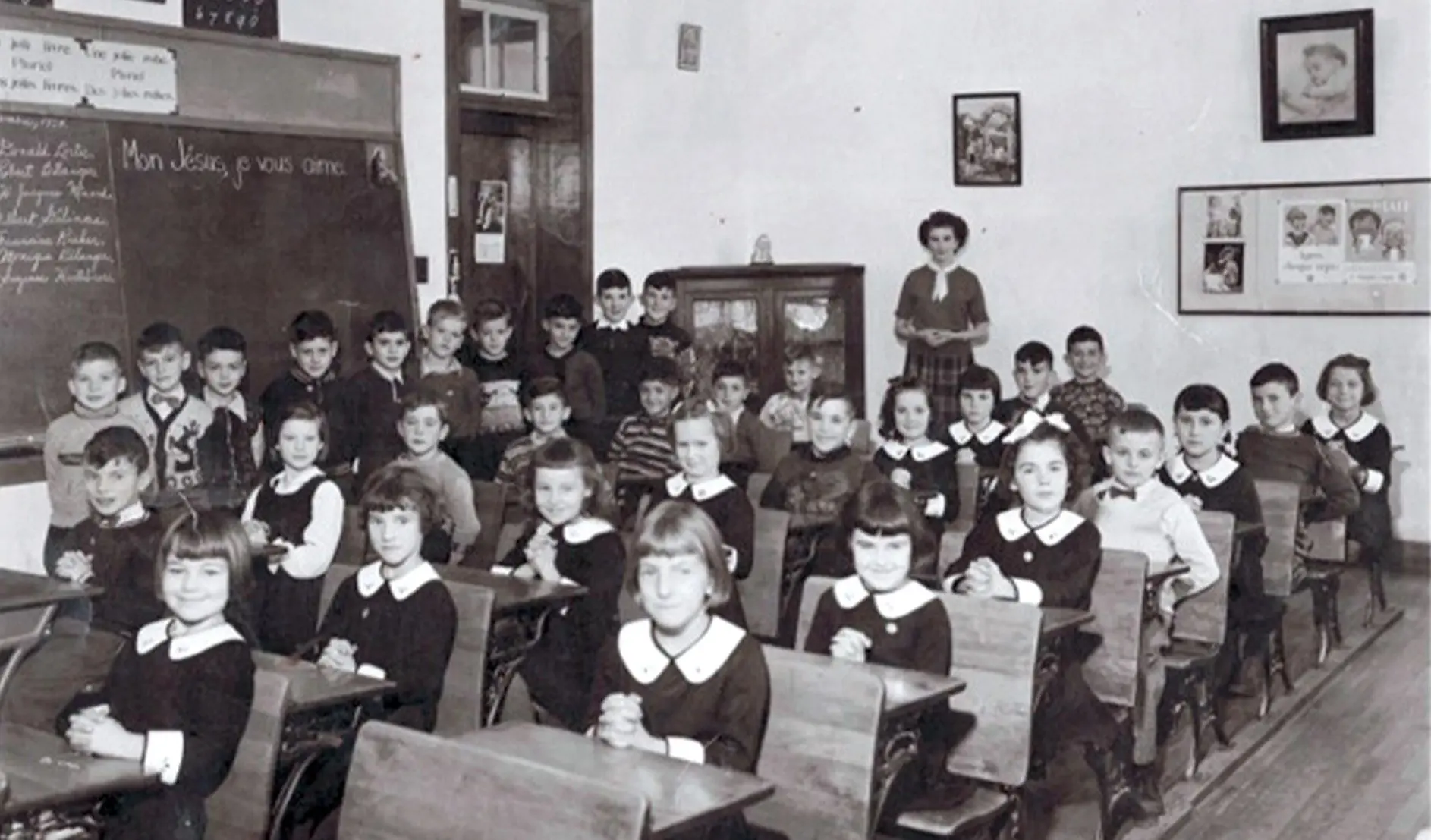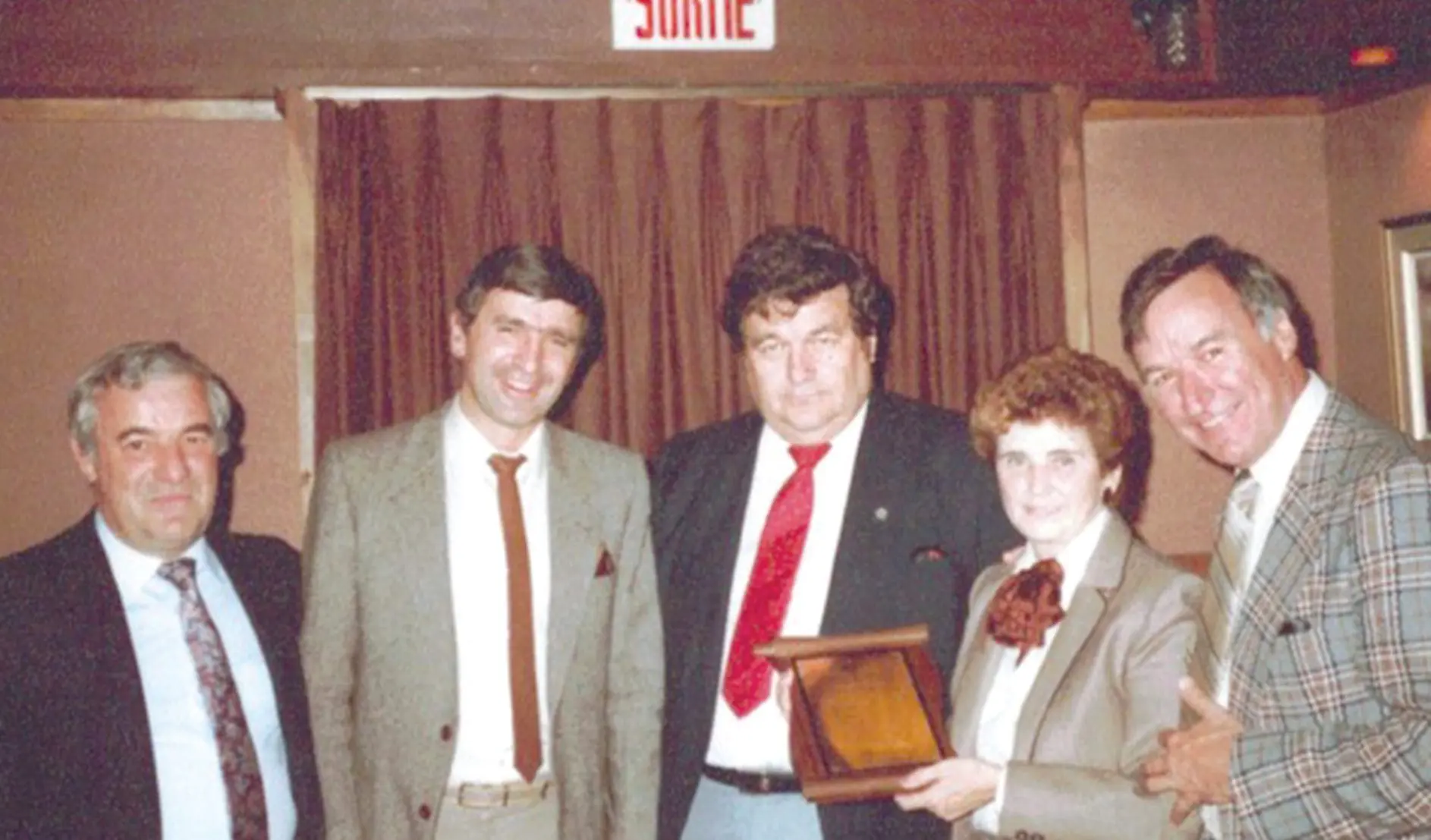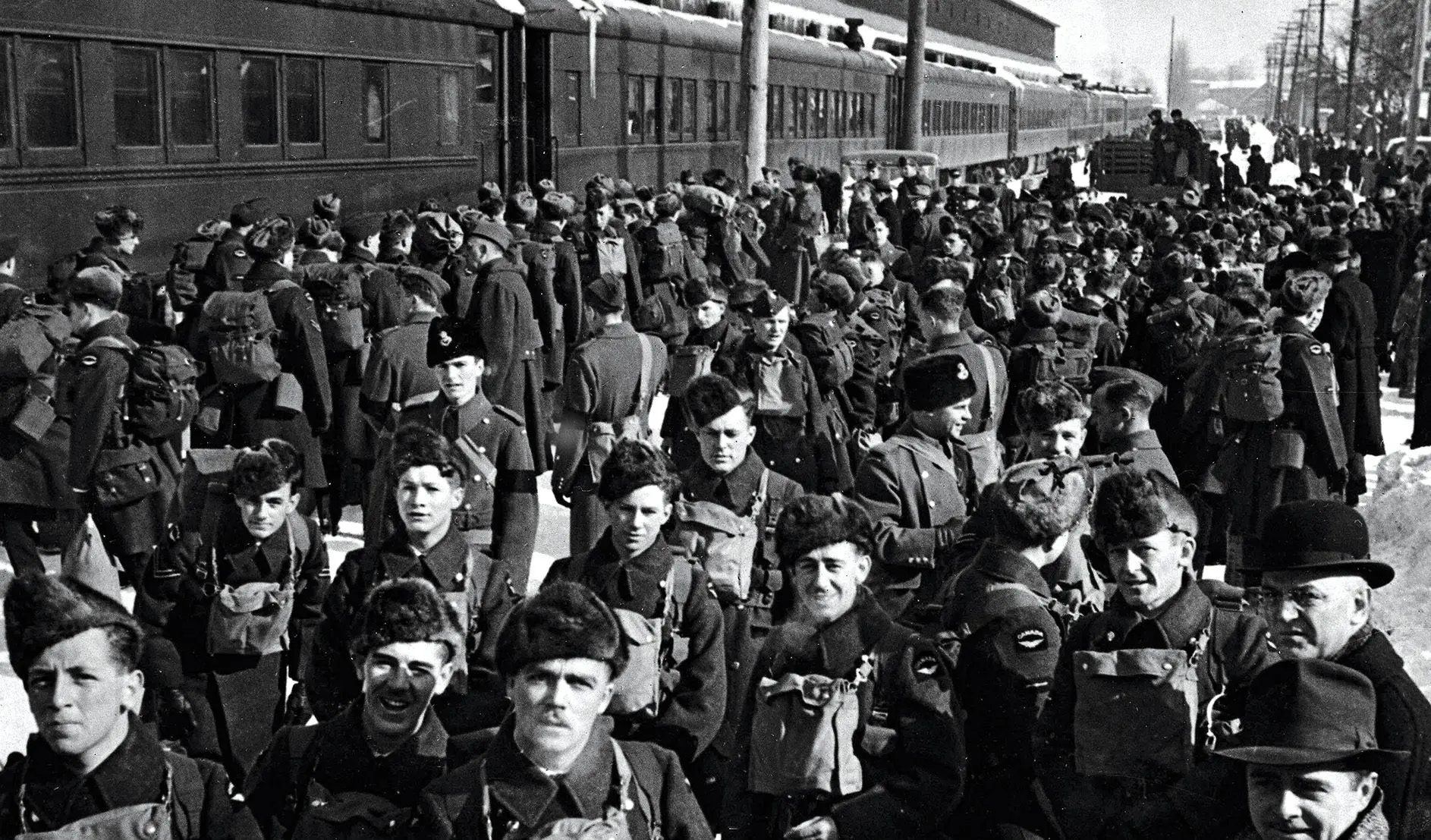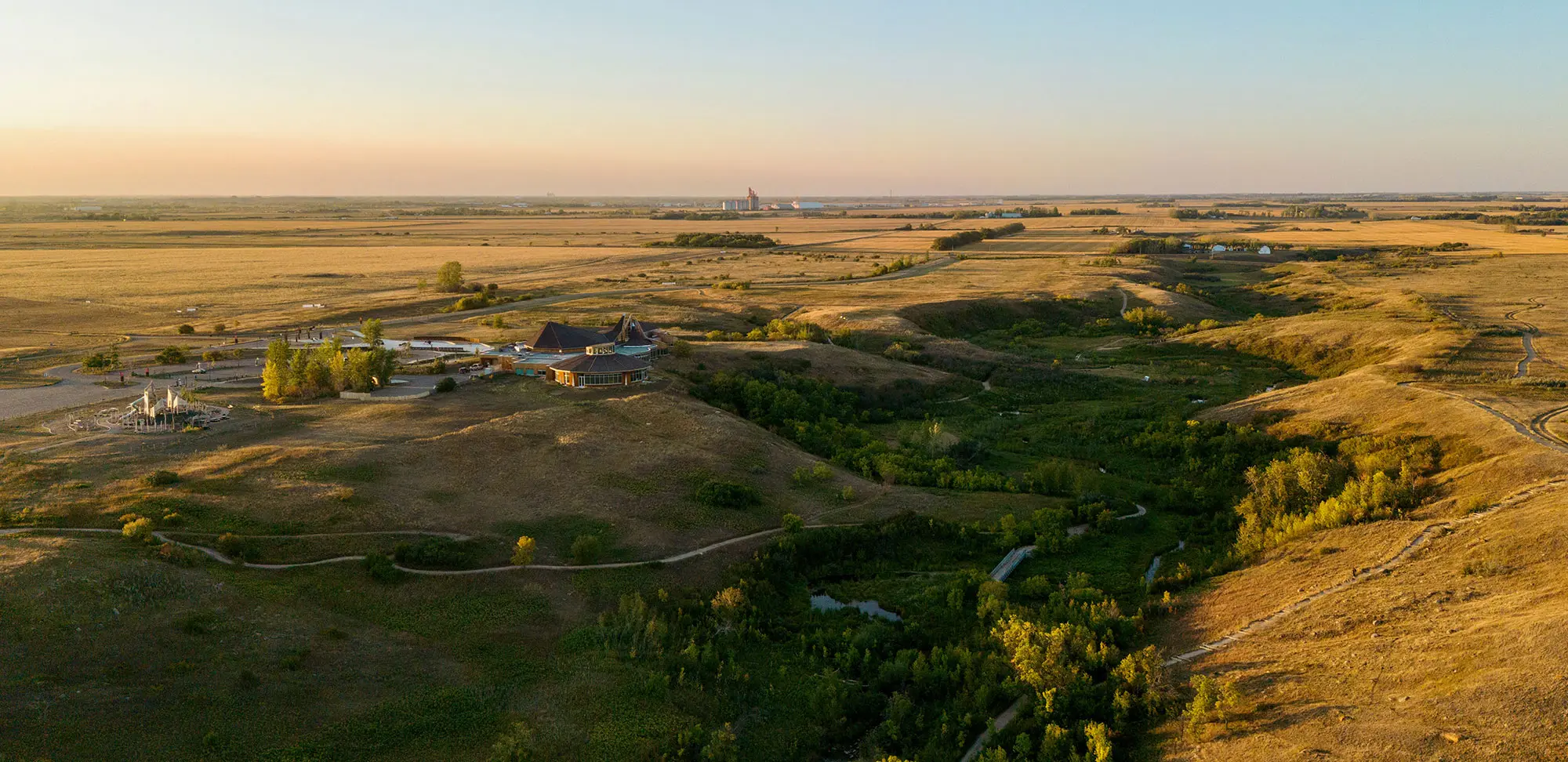When war broke out in September 1939, Canada was still in the grip of the Great Depression. That was when 16-year-old Thérèse Gagnier (District 27 Ottawa-Carleton) left her family — her parents and 16 siblings — on the family farm near the village of Hammond in eastern Ontario and arrived in Ottawa to finish high school at the Convent of Our Lady of the Sacred Heart (better known as the Rideau Street Convent), a bilingual school for girls established in 1869.
“At first, I cried a lot,” says Gagnier.
“I had a hard time adjusting to this new life in the city, away from my family. I felt intimidated and a little lost. The first time my parents came to visit, I asked them to please take me home. But they had sacrificed to make sure I got an education at the convent, and they reminded me of my choices: teaching or working as a cleaner in private homes. And I understood that I had to earn money to pay for my little sisters’ education.”
Gagnier slowly settled into her new life in the big city. On Saturdays, she helped her father sell products from the farm — chicken, pork, beef and vegetables — downtown at the ByWard Market, one of Canada’s oldest and largest public markets. “I remember seeing King George VI and his wife, Queen Elizabeth — the Queen Mum — when they came to Ottawa. It was impressive, and I was fascinated by all the different kinds of cars.”
The Second World War broke out two days after Gagnier arrived at the convent. “We were protected,” she remembers, “and weren’t really aware of the news.” What she did know came from reports she listened to on the radio with her family when she returned home during the summer to work on the farm.
“We were a little scared,” says Gagnier. “We didn’t know what to expect and we were afraid someone in the family would be called to arms. I lost a good friend in the Dieppe Raid in 1942.” She recalls discussions about exemptions for those who worked on farms or in munitions factories. Everyone contributed to the war effort: Girls could only buy one pair of nylon stockings because nylon was used to make parachutes. Families were given ration coupons for food. Gas and tires were also rationed, so Ottawans counted on the streetcars to get to work.
Gagnier had always dreamed of being a teacher like her aunt Gertrude. In 1941, she began her studies at the University of Ottawa’s Normal School. One year later, at the age of 19, she became the teacher in a one-room rural school in Bourget, Ont., 50 kilometres east of Ottawa.

She recalls that boys and girls entered through different doors back then. She taught all subjects, in both French and English, to her 20 students, who were in grades 1 through 8 — some almost as old as she was. “Some of them even wrote me little love notes,” she laughs.
She also remembers the inspector’s visit early in that first school year: “You can imagine my stress — I had just organized my schedule on the back of an old calendar because I had no other paper.” On cold winter days, she gathered the children around the wood stove to teach her lessons. “I tied little boots and wrapped up little ones to keep them warm,” she says.
From 1943 to 1947, Gagnier taught at her childhood school in Canaan, Ont., 31 kilometres east of Ottawa. Her 53 students, in grades 1 through 8, ranged in age from six to 14 and were her neighbours, brothers and sisters, both English- and French-speaking. “It was a real zoo,” she adds.

“Families were barely surviving,” she remembers. “They were poor, and there wasn’t much in the children’s lunch boxes.”
In 1946, Gagnier met her future husband, René, and — like most women of her time — stopped teaching when they married in order to raise a family. Seven years later, in the midst of a teacher shortage, she was persuaded to return to teaching at Bourget, and a school trustee hired a woman to care for Gagnier’s household while she worked.

In 1959, the family moved to Orleans, Ont., now a suburb of Ottawa, where Gagnier first worked as a substitute teacher and then taught full-time until she retired in 1984. Her time in teaching left its mark on several generations. Her son, Pierre, says, “She was loved by the children. She was gentle and very attentive while caring equally for her own family.”

When Gagnier retired, she took advantage of her newly acquired freedom to take dance classes, join organizations such as Golden Age, travel occasionally and spend time at the family cottage. She also volunteered, including at Résidence St-Louis in Orléans, a long-term care home where she helped seniors go to and from activities.
Following her husband’s death, Gagnier moved to the Jardin Royal Garden retirement home in Orleans, where, from her balcony, she can see St-Pierre St., which she walked along for many years when she taught at Préseault School.
Gagnier, says her son, likes to talk about the past, live fully in the present and anticipate the future with hope and joie de vivre.
Original French feature and English translation by Pauline Duquette-Newman.
“You can imagine my stress — I had just organized my schedule on the back of an old calendar because I had no other paper.” – Thérèse Gagnier

Canada goes to war, 1939
Canada declared war on Germany in September 1939. Britain’s declaration of war did not automatically commit Canada, as had been the case in 1914. But there was never serious doubt about Canada’s response: The government and people were united in support of Britain and France. After Parliament debated the matter, Canada declared war on Germany on Sept. 10. Prime Minister William Lyon Mackenzie King promised that only volunteers would serve overseas.
Canada was unprepared for war. The regular army of 4,500 men, augmented by 51,000 partly trained reservists, possessed virtually no modern equipment. The air force had fewer than 20 modern combat aircraft, while the navy’s combat potential consisted of only six destroyers, the smallest class of ocean-going warships. It was a modest beginning.
Canadian War Museum (warmuseum.ca)
Everyday life in Canada
The War Measures Act, invoked in 1939, empowered Ottawa to take whatever measures the government believed necessary for the successful prosecution of the war. The federal government carefully managed the flow of information and, in 1941, imposed strict wage and price controls. Beginning in 1942, it rationed many commodities, such as meat, sugar, coffee, gasoline, rubber and textiles.
In addition to those in military service or working in war industries or agriculture, millions of Canadians contributed to the war effort by volunteering with organizations such as the Red Cross or participating in salvage campaigns, gathering everything from scrap metal to newsprint. Through it all, millions of Canadians, reading official casualty reports in the newspapers, worried daily about the fate of their friends and loved ones overseas.
Canadian War Museum (warmuseum.ca)
The war comes to Canada, 1942—1945
Canada, declared war on Germany after German submarines sank more than 100 ships in Canadian and Newfoundland coastal waters. By May 1942, German U-boats operated in the approaches to Newfoundland and Nova Scotia. They had even penetrated the Gulf of St. Lawrence and the St. Lawrence River, where they sank more than 20 merchant vessels and warships, including one less than 300 kilometres from Quebec City. These losses prompted Ottawa to close the Gulf of St. Lawrence to ocean shipping. In 1944 and 1945, German submarines returned and sank Canadian warships just off Halifax harbour.
Some Germans landed in Canada. In 1942, German submarines put ashore an agent in Gaspé, Que., and another near Saint John, N.B.; neither did any harm. In 1943, a landing party from a U-boat set up an automatic weather transmitting station in Labrador.
Canadian War Museum (warmuseum.ca)






